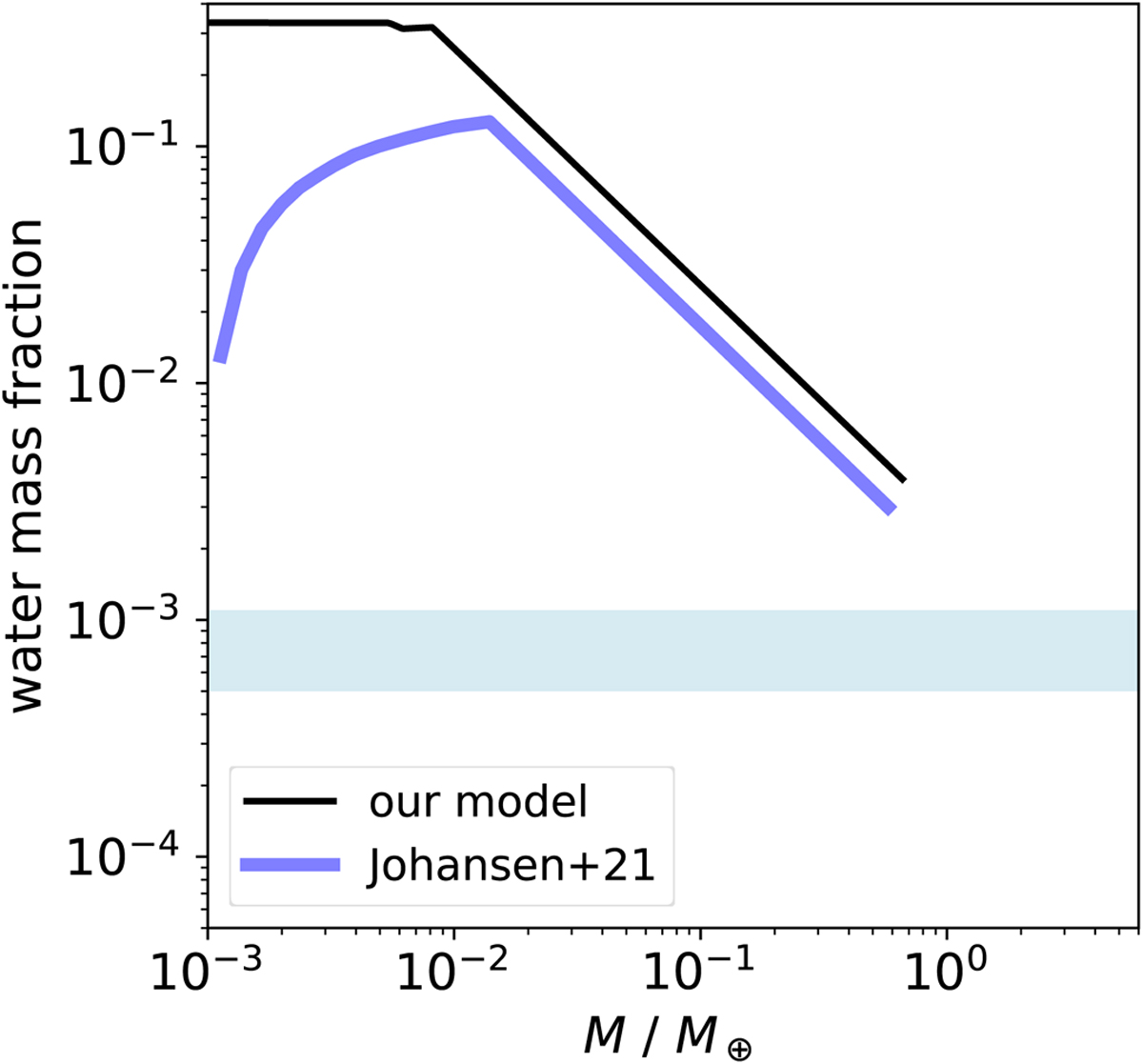Fig. B.1

Download original image
Planetary water mass fraction of an Earth analog as a function of planetary mass. The light-blue region corresponds to the estimated total water mass fraction of the Earth. The final mass is less than 1 M⊕ because it is assumed that the proto-Earth subsequently collides with Theia (e.g., Quarles & Lissauer 2015). As a result, the proto-Earth gains mass and probably loses some of its water through the impact. The data corresponding to the model of Johansen et al. (2021) were taken from their Fig. 7 for the case that the water ice content of the pebbles in their disk is 35%. For our model, we used the simple envelope opacity model with κenv,0 = 0.1 cm2 g−1 and set the pebble surface density to the gas surface density multiplied with ξflux = 0.0036, similar to Johansen et al. (2021). This corresponds to the “simple opacity”-models shown in Fig. 3. In addition, we changed the input parameters of the disk and the host star to mimic the conditions in the model of Johansen et al. (2021). They are listed in Table B.1. The evaporation of the pebbles in the disk is neglected.
Current usage metrics show cumulative count of Article Views (full-text article views including HTML views, PDF and ePub downloads, according to the available data) and Abstracts Views on Vision4Press platform.
Data correspond to usage on the plateform after 2015. The current usage metrics is available 48-96 hours after online publication and is updated daily on week days.
Initial download of the metrics may take a while.


